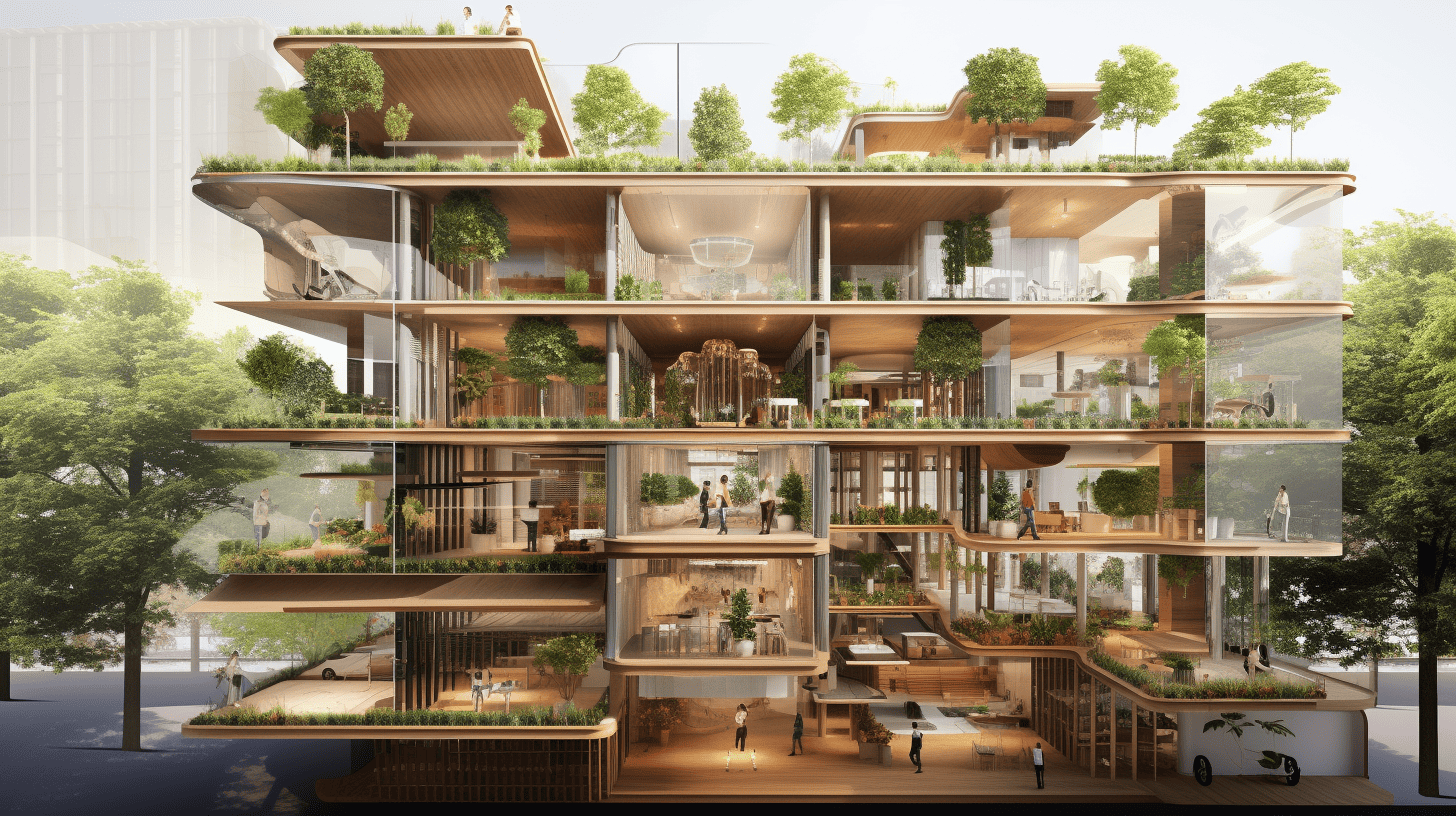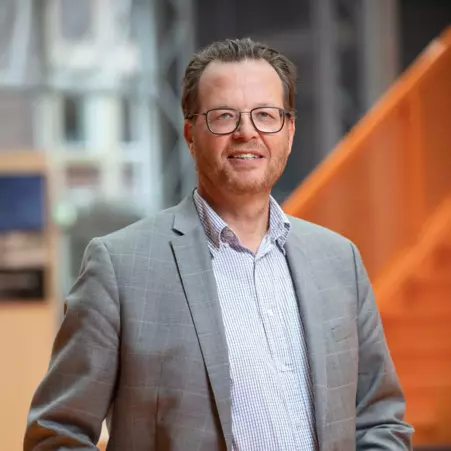
We spend much of the day indoors. As such, the buildings we stay in significantly influence our health. For example, a lot of attention is paid to good ventilation to prevent the spread of infectious diseases. Sufficient daylight for a better mood and work performance is also high on priorities. But a building can do much more for our health. For example, by intelligently adapting to the personal comfort needs of users.
The built environment and our health are inextricably linked. 4TU.Built Environment, a collaboration between the built environment faculties of the four technical universities in the Netherlands, set up a special team for collaborations on health in the building stock. The Domain Acceleration Team (DAT) ‘Health’ initiates new research and is also the point of contact for people from the industry, the Topsectoren, and the government. Helianthe Kort, a part-time professor in the field of Building Healthy Environments for Future Users at TU Eindhoven, spoke to Innovation Origins about the opportunities for the future together with Atze Boerstra, professor of Building Services Innovation at TU Delft and director of the engineering firm bba indoor environment.
- Buildings affect our physical and mental health.
- 4TU.Bouw focuses on studies to make the built environment healthier, including acoustics, light, air quality, and social well-being.
- A personalized indoor climate, such as heating and cooling, is an important partial solution.
Practical and social
The DAT Health team focuses on five subprograms: healthy offices, healthy hospitals, healthy homes, healthy schools, and healthy cities. These include various aspects such as acoustics, light, air quality, and thermal comfort. The social side – the well-being of users – is also essential. For example, scientists are researching the relationships between urban design and social isolation. Kort: “For example, they are looking at whether we can design cities where people feel less lonely, for example, by facilitating and encouraging socialization in squares and parks.” Another group is looking at the overheating phenomenon and how we can prevent it with measures in and around buildings.

More inclusion in buildings
Kort is the coordinator of the Health in the Built Environment Community at TU/e, and she has been involved with the DAT from day one. In addition to her work at TU Eindhoven, she is also a lecturer at the Utrecht University of Applied Sciences. She has worked at the intersection between health, technology, and architecture for decades. “I find it very interesting to see what building physics factors can keep people healthy and allow them to feel optimally in buildings. We are also looking at what building physics factors are needed to make buildings suitable for people who are chronically ill or have special needs. Think of people with autism. By adjusting their environment, for example, soundscaping (muffling sound, ed.) in specific places in an office building, they can still participate in an office environment, whereas previously, that might have been difficult. In this way, we can use everyone’s qualities in the best possible way.”
Reducing stress
Building design is increasingly focused on reducing stress and anxiety, for example, among employees in an office building. “By creating a green environment, ensuring sufficient daylight, and limiting noise pollution, you can limit stress,” Kort says.
Health in the building stock takes several forms. “The social impact can be seen at different levels. A more appropriate environment affects the personal issues of building users, both for living and working. There are short-term effects, such as better concentration during work, and longer-term effects, such as better well-being and work attitude. On a macro level, it then impacts, for example, absenteeism.”
Personalized indoor climate

Boerstra also has extensive experience creating optimal indoor environments in homes, schools, and offices. He recently joined the DAT on behalf of TU Delft. From his experience as a senior consultant at an engineering firm, he has strong opinions on the importance of good air quality and thermal comfort, for example. “We have already made great strides regarding health in buildings. But it’s a relatively slow process. It started around 1900. Back then, there were a lot of problems in housing construction, for example, due to moisture and mold growth and particulate exposure from open fires. Then, the Housing Act and building code were created to make homes healthier. Since then, fortunately, our buildings have become much healthier, but we cannot sit back. Because of the energy transition, people in current projects sometimes overshoot, for example, in terms of insulation, so that too little attention is paid to ensuring a sufficient supply of fresh air,” Boerstra says.
He foresees that even more gains can be made in the future. For example, by personalizing the indoor climate of buildings. “Think about the temperature. Heating a degree lower – to use less power and pollute less – is not a problem for many users, but some people suffer from this. Think of older people with reduced blood circulation. Then microclimatization, or a personal solution such as a heated armchair in a nursing home, would offer a solution. The advantage is that you no longer have to heat an entire room and can still provide good comfort exactly where the building user needs it,” he states.

Bringing research together
Kort and Boerstra agree: in the future, we need to adapt buildings and the facilities surrounding them even further to people’s personal needs. This is possible with the new forms of building automation and contributes to well-being, health, and better performance. “The universities joining 4TU.Bouw all focus on other subfields. At Wageningen University, for example, the focus is on the design of outdoor space and food. In Delft and Eindhoven, the focus is more on architectural design and installation engineering aspects,” Kort says. Boerstra adds: “By bringing these different perspectives together, we can reinforce each other well, which is also good for the whole country.”
According to Kort, much research is still needed to make the built environment compatible with our health. “We now know the influence of the built environment on our health from various aspects. But we always looked at one specific component. In the coming years, I want to combine the various studies to see how one can influence the other. That way, we can focus much more on prevention. For example, by adequately monitoring air quality and encouraging people to work and live in an environment with good air quality to support their performance and daily activities.”

